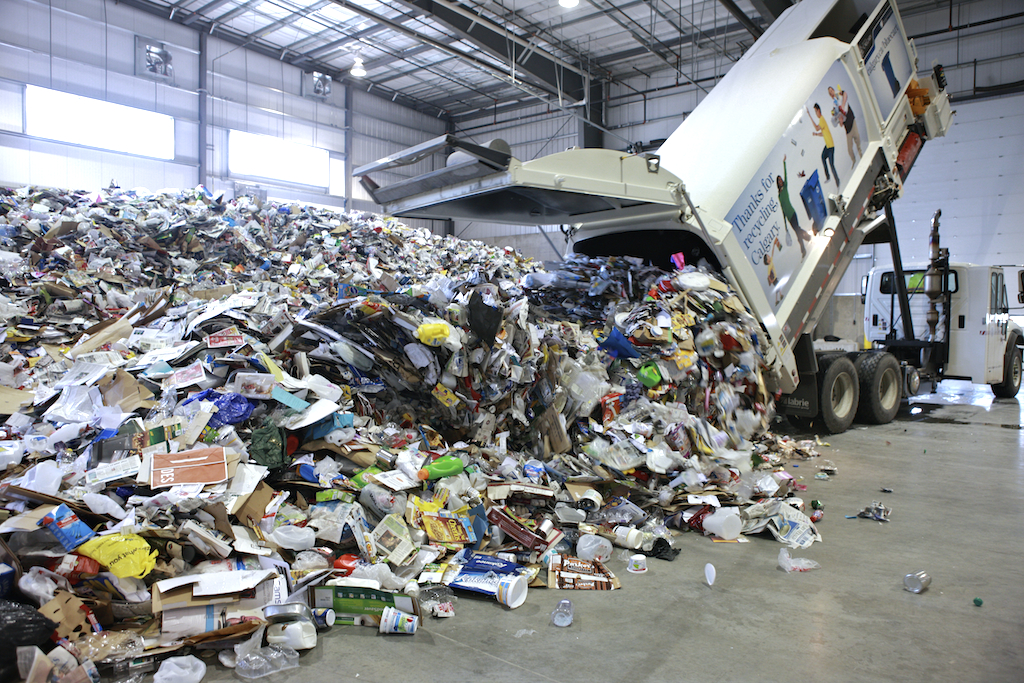How the Blue Cart recycling facility works
Sorting your recyclables the right way makes a big difference for Calgary’s Blue Cart program.
Learn how the recycling facility works to sort the different types of recyclables and what things to keep out of your blue bin.
In this video, we take you inside a modern recycling facility to demonstrate the cutting-edge technology that sorts our recyclables into the right categories. From automated sorting systems to smart sensors, you’ll see how your blue cart recyclables get ready to be turned into new products.
About the recycling facility

When your items are picked up from your blue cart or community recycling depot they go to the GFL Environmental Inc. recycling sorting facility just east of the Calgary city limits.
Known as a “material recovery facility” (MRF), this high-tech building separates the materials into its different categories. The MRF does this by using a variety of equipment and people to handle this work.
The sorting process is:
- 90% automated sorting by machines
- The other 10% is handled manually by employees
How the sorting process works
For recyclables to be turned into new products, they need to be sorted into separate material categories first – paper, glass, plastic, and metal.
Hover over the icons in the graphic below to learn more about each step of the recycling process.
Where your recyclables go after they are collected?
Recyclables from City recycling programs go to manufacturers and recyclers all over North America and around the world.
This is because the consumer goods we buy are made in locations all over Canada, United States and internationally. Next time you buy an item, look at the package to see what location it is from.
GFL Environmental works with many different companies to send sorted recyclables to. They are chosen based on market conditions, transportation availability as well as meeting ethical and responsible recycling requirements.
| Recyclable material | Where does it go? |
|---|---|
| Plastic jugs, bottles and food containers Bundled plastic bags | Canada |
| Metal food cans and foil | Eastern Canada |
| Cardboard | Canada, United States |
| Paper | Eastern Canada, United States, India, Malaysia, Taiwan |
| Glass bottles and jars | Western Canada |
Did you know? The first step in the recycling process starts right here in Calgary! Your recyclables are first taken to the contracted recycling facility by GFL Environmental Inc.

